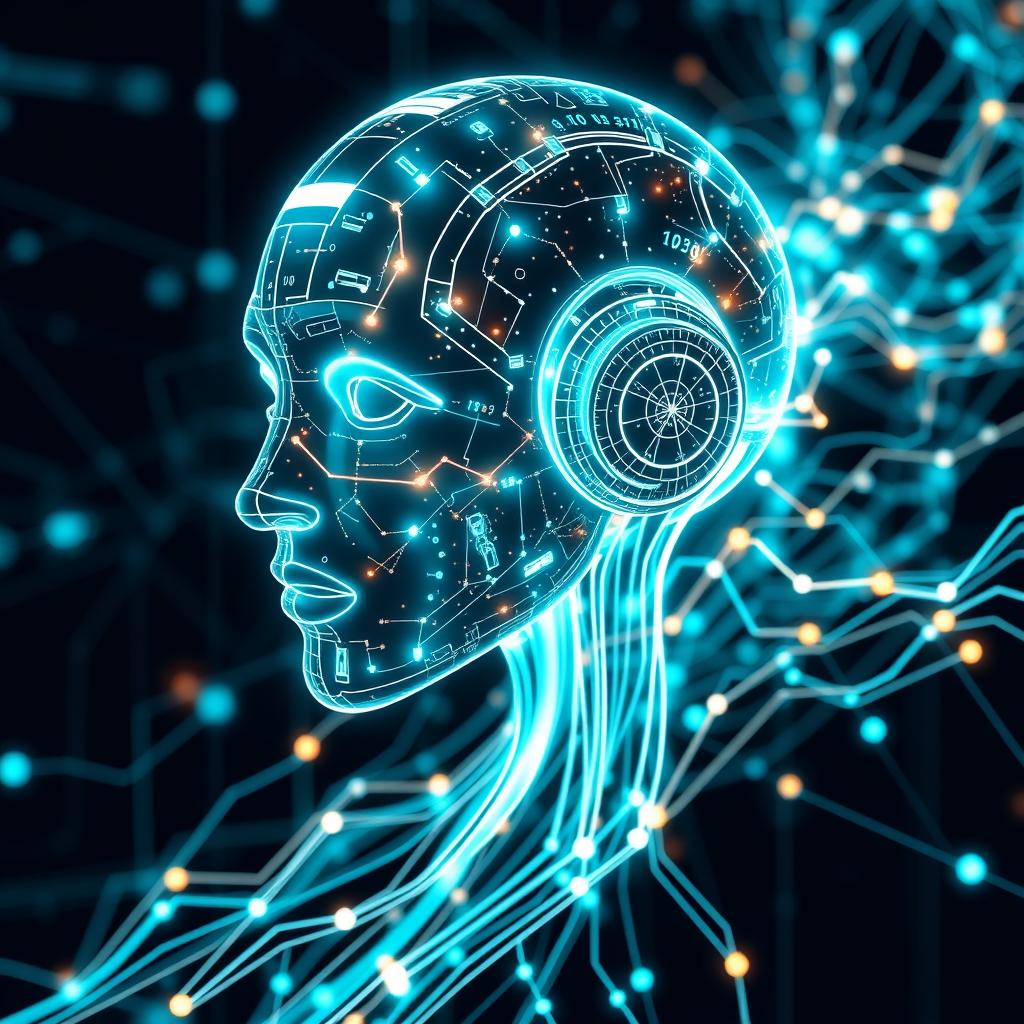Unlocking Future Potential: AI Predictive Analysis & Automation
In the rapidly evolving landscape of technology, Artificial Intelligence (AI) stands out as a pivotal force reshaping industries. With its integration into predictive analysis and automation, AI offers unprecedented potential for the future. This blog post delves into the transformative impact of AI on predictive analysis, focusing on the advances made possible through generative AI and automation, and explores how these technologies are unlocking future potential across various sectors.
Understanding Predictive Analysis with AI
Predictive analysis involves using historical data, statistical algorithms, and machine learning techniques to predict future outcomes. The integration of AI takes predictive analysis to the next level by enhancing accuracy and efficiency. AI models can process vast amounts of data quickly, recognize patterns, and provide insights that would be impossible for humans to discern manually. For instance, AI-driven predictive analysis in healthcare can foresee disease outbreaks, in finance it can predict market trends, and in logistics, it can optimize delivery routes. The key to these advancements is AI\’s ability to learn and adapt over time, becoming more precise in its predictions.
The Role of Generative AI
Generative AI, a subset of AI technology, refers to algorithms that can generate new content or data that\’s indistinguishable from real content. Its impact on predictive analysis is profound. By creating synthetic data, generative AI reduces the limitations posed by insufficient real-world data, allowing for more robust models. For instance, in sectors where data privacy is crucial, synthetic data maintains privacy while still enabling powerful predictive modeling. Furthermore, generative AI can simulate various scenarios and outcomes, providing valuable foresight and risk assessment capabilities across numerous fields.
Automation and its Growing Influence
Automation, powered by AI, is revolutionizing how tasks are performed by minimizing human intervention. The automation of repetitive, mundane tasks allows human workers to focus on more strategic and creative activities. Predictive analysis integrated with automation allows businesses to anticipate changes and respond in real-time. For example, automated warehouses use predictive analytics to maintain optimal inventory levels by forecasting demand. Similarly, in manufacturing, predictive maintenance schedules can prevent costly downtimes. As a result, AI-driven automation is a critical component in enhancing productivity and fostering innovation.
Industries Transforming with AI Predictive Analysis and Automation
Healthcare
In healthcare, AI\’s predictive capabilities are saving lives by anticipating epidemics and optimizing resource allocation. Predictive analysis combined with automation helps in managing patient flow, scheduling surgeries, and predicting equipment failure, ensuring efficient hospital operations. The impact of generative AI in drug discovery, where computer-generated molecular models speed up research, further showcases the potential of these technologies in transforming healthcare.
Finance
The financial industry heavily relies on predictive analysis and AI for risk management, fraud detection, and customer service enhancement. AI algorithms analyze transaction patterns to prevent fraud and optimize investment strategies. Automation of customer service through chatbots has improved response times and reduced human error, enhancing customer satisfaction. The power of AI in predictive financial analysis is an invaluable asset for making informed investment decisions and improving operational efficiency.
Manufacturing
Manufacturing is another industry witnessing a significant transformation due to AI-driven automation and predictive analysis. Smart factories leverage AI to monitor equipment health, predict maintenance needs, and optimize production schedules. Automation of supply chains ensures seamless coordination between various stages of production and distribution, enhancing overall efficiency and reducing costs. This evolution is paving the way for the industry\’s future, defined by increased productivity and reduced operational risks.
Challenges and Considerations
Despite the immense potential, the adoption of AI in predictive analysis and automation comes with challenges. Data privacy remains a critical concern, as AI systems require extensive data sets to function effectively. Ensuring data security while managing sensitive information is paramount. Additionally, the ethical implications of AI, such as potential bias in decision-making, need to be addressed proactively. Organizations must also consider the socio-economic impact, as automation could lead to job displacement. A strategic and ethical approach is essential for realizing the full potential of AI technologies.
The Future of AI Predictive Analysis & Automation
The future of AI in predictive analysis and automation is promising, with continuous advancements on the horizon. The integration of AI with emerging technologies like Internet of Things (IoT) and blockchain will further enhance predictive capabilities and automation. As machine learning algorithms become more sophisticated, their predictive accuracy will improve, providing deeper insights and foresight. Organizations that embrace these technologies will be positioned to lead, leveraging AI for competitive advantage and innovation. Skill development and upskilling initiatives will also become imperative to ensure a workforce capable of thriving alongside these advancements.
Embracing AI Advancements for Success
For businesses and individuals alike, embracing AI predictive analysis and automation is no longer optional but a necessity for future success. Staying informed about the latest developments and adopting a proactive approach to integrate these technologies can drive significant benefits. Investing in AI tools and fostering a culture of innovation will enable organizations to adapt to the dynamic global landscape and unlock new potential.
Conclusion
In conclusion, the impact of generative AI and automation on predictive analysis is transformative, reshaping industries and opening new horizons. By harnessing these technologies, businesses can unlock future potential, driving growth, efficiency, and innovation. As we navigate the evolving landscape, it is crucial to consider ethical, strategic, and educational aspects to harness AI responsibly and sustainably. Embrace the future of AI predictive analysis and automation today, and propel your organization into a future defined by unparalleled opportunities.
To stay ahead in this rapidly evolving field, start leveraging AI technologies now. Enhance your predictive capabilities, automate processes, and pave the way for a sustainable and competitive future. Engage with experts, invest in learning, and lead the way with AI-driven transformations.

